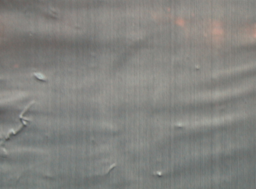When the vision industry was just a fledgling niche technology, everyone invested all their time in software and video technology. Nobody ever considered the role lighting plays in application effectiveness. Any type or method of lighting would do; the camera coupled with the software would distinguish important features and the computer would perform the proper function.

illuminates an aluminum web to highlight defects.
As vision technology evolved in the late 1990s, lighting became recognized as a key to solving marginal or unworkable vision applications by selectively controlling contrast in the field of view (FOV). Hard to see features were more readily resolved, which improved processing speed and accuracy.
To implement this new strategy, engineers realized that shaped lighting, specifically, fiber optics, optimized contrast, producing optimized resolution accuracy and overall performance, while avoiding illumination where it was not needed.
Fiber optic lighting provided (and still provides) the following advantages:
- Ability to shape light output: lines, rings, and squares in addition to circles (normal beams) could be emitted.
- Concentrated output from a fiber optic light guide allowed the use of a lens to intensify, a polarizer to minimize glare, or a collimator to control beam spread.
- Output uniformity is extremely good.
- No copper wire or current required, therefore, no EMI or magnetic interference to add electrical “noise.”
- Easy to use in wet, corrosive, or explosive environments.
- Impervious to a wide range of temperatures.
- Fiber optic light guides could provide light to remote locations where electrical sources were too dangerous, too difficult to reach, or too expensive to service.
- Most fiber optic designs include housing with built in mounting features, no fixtures required.

the inspection line shown above.
However, fiber is not perfect. Engineers realized there are tradeoffs to be considered:
- Fiber optic lighting is not efficient. A fiber optic light guide will lose at least 40% of the originating input power and the loss grows with light guide length, as does an overall wavelength shift from white to green (blue wavelengths drop quickly over length).
- Compared to traditional lighting methods, fiber optic lighting is expensive, probably the most expensive lighting method in the market today.
- While quartz halogen, xenon and metal halide light source lamps are very bright, they are also short lived. The best service life is estimated to be between 500-1000 hours with typical service around 200 hrs. Stopping the process of replacing lamps is disruptive and costly.
LEDS Evolve
First conceived in 1962 by Nick Holonyak Jr., continuous improvement of the light emitting diode (LED) made this electronic device a more relevant, less expensive alternative to fiber optic and other types of lighting technology. The LED was first widely available in its red incarnation, which suited some vision applications; those working with monochromatic (B&W) cameras.
However, the device was largely unsuited for any color evaluation and so had limited use. In 1996, the first “white” LED was offered for sale. The chip emitted what appeared to be white, bright light, but in essence, was a blue LED doped with phosphorus appearing to emit white light. Regardless of the technical trickery, in 1996, LED technology forever seated itself as a viable replacement technology for fiber optic lighting in vision applications for the following reasons:

- LEDs might be less costly to use with higher electrical efficiency. To generate the same light power, LED devices use less electricity.
- There is no optical loss. When compared to the same illuminating area, LEDs could be much brighter.
- Although not as elegant, LED chips and discrete devices could be configured to emit shaped light, just like fiber, and use the same power and control enhancing accessories.
- LEDs could be run continuously, or strobed at high frame rates to help cameras achieve sharp images with short acquisition times (although the controllers required to leverage these features would generate additional costs).
- LEDs are extremely consistent; they do not suffer from a significant drop in intensity over time, like traditional fiber optic sources (15% vs 50%)
- LEDs are extremely long lived; 30,000 to 50,000 hours of continuous use could be realized.
- LEDs can be addressable. Therefore, circuits to control LED arrays improved the versatility of the lighting tool kit. The same lighting configuration (a ring for example) could be made to do more with this advanced circuitry, controlling array segments and sequencing light exposures to manage contrast even better.
- Most LED designs include housing with built in mounting features, no fixtures required.
Just like fiber, LEDs have their weak points. As you will probably notice, the weak points of each technology can be offset by one another.
- LED output and performance is heat sensitive. The LED gets hot from running or from hot ambient conditions. Once the LED heats up, its output power declines dramatically and increases the potential of permanent failure.
- LEDs are not very uniform; they sometimes require diffusing to attain some level of uniformity.
- When they run, they produce heat.
- They can’t (or shouldn’t) be used in wet, corrosive, or explosive environments.
- They are electrically noisy.
- The smallest LED does not match the size of the smallest fiber bundle; this equates to limited use in tight spaces.
- Color rendering ability is poor compared to Fiber, because the white LED chip is mixture of three wavelengths, red/green/blue. The combination lacks the color profile of a continuous spectrum device (also referred to as a “black Body” radiator). The result is usually an inaccurate representation of the illuminated subject’s true color.
Today, most general vision applications prefer the less expensive, longer lasting, and effective lighting produced by LEDs. However, for several reasons listed above, fiber optic lighting is still the preferred lighting source.

